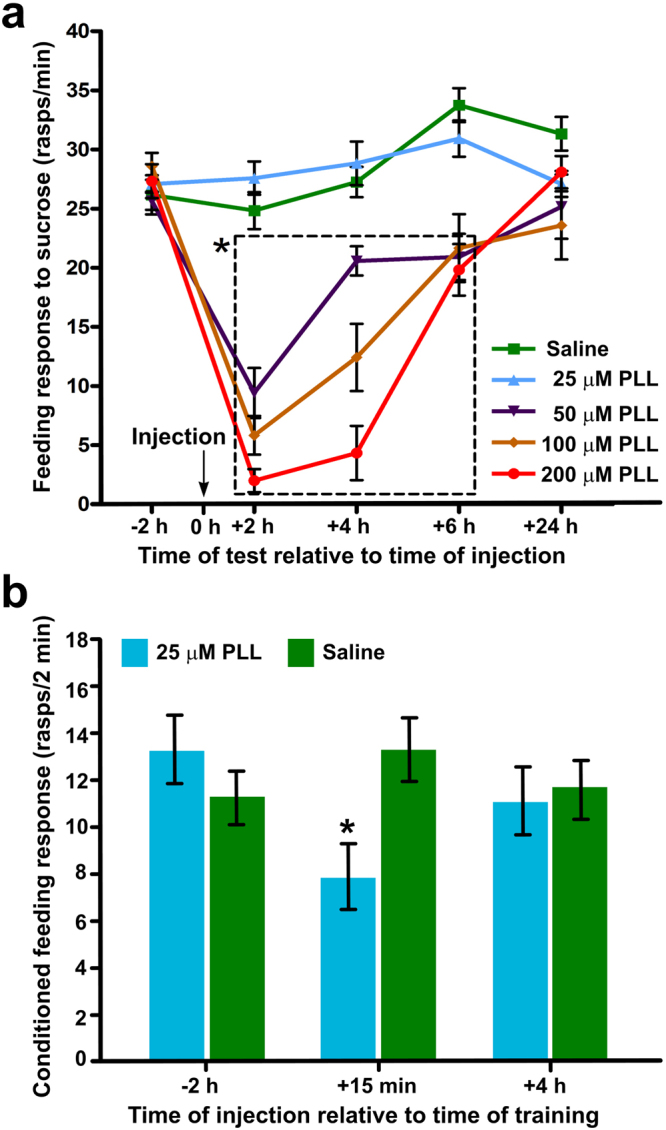Figure 1.

Inhibition of Dicer leads to the impairment of LTM formation. (a) Optimization of Poly-L-Lysine (PLL) concentration. The results of sucrose test conducted on snails injected with saline solutions containing PLL at different concentrations (0 µM, 25 µM, 50 µM, 100 µM or 200 µM). The tests were performed 2 h before (−2 h) and 2 h (+2 h), 4 h (+4 h), 6 h (+6 h) and 24 h (+24 h) after the injection. The 50 µM, 100 µM and 200 µM PLL solutions all cause significant impairments of the feeding response at 2 h, 4 h and 6 h post-injection compared against saline treatment (Two-way Repeated Measures ANOVA, p < 0.0001 for both Time and Treatment); Bonferroni posttests, p < 0.001 to 0.05 (compared against saline treatment at each of the post-injection test time points). By contrast, 25 µM PLL does not inhibit the unconditioned feeding response of snails at any of the test time points (Bonferroni posttests, p > 0.05 at each test time point). The asterisk next to the dashed rectangle indicates that all values within the rectangle are significantly lower than the equivalent values in the Saline as well as the 25 µM PLL group. (b) The effect of PLL injection on memory formation was studied in 3 experimental (blue bars) and 3 control groups (green bars). All snails were subjected to one-trial CS + US training. 2 h before (−2 h) or 15 min (+15 min) and 4 h (+4 h) after the training, experimental animals were injected with 25 µM PLL, whereas control animals were injected with saline only. All snails were tested for feeding response to the CS (conditioned response) 24 h after the training. An unpaired t-test revealed a significant suppression of the conditioned response (p < 0.02) of experimental animals injected with PLL 15 min after conditioning compared to the control snails. All data in this figure are shown as means ± SEM.
